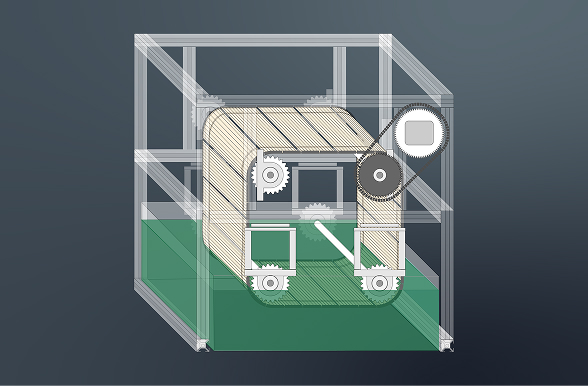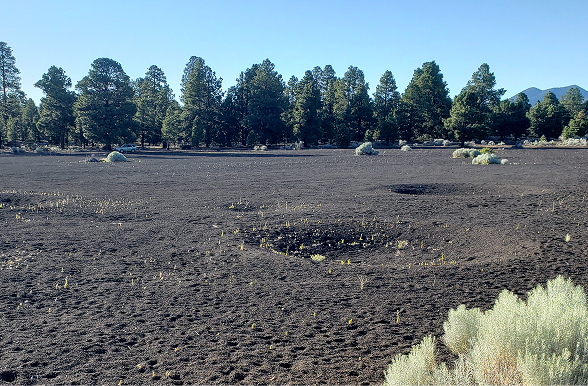
Research
Research projects that are changing the way we view the Earth.
Because of the depth and breadth of our team, our work has been able to drive positive change around the globe. The list of projects below is a sampling of what’s possible.

MissionDAC
MissionDAC explores the molecular mechanisms of moisture-driven direct air capture, particularly sorbent materials that release captured CO2 using moisture instead of energy-intensive heat or vacuum pressure. This project uses advanced computer studies to understand how structural and chemical changes within sorbents drive CO2 capture and release. The models pull from x-rays, electron beams and gas flow systems to reveal how these materials are structurally organized and how they transport water, ions and carbon. MissionDAC aims to increase CO2 capturing capacity, manufacture durable materials and accelerate both capture and release rates. Technology development for things like batteries, fuel cells and water purification have the potential to benefit from this work. The project brings together researchers from Northern Arizona University, Arizona State University and the University of Texas at Austin. It is led by Jennifer Wade at NAU and sponsored by the Department of Energy under award #DE-SC0023343.

AUDACity
ASU’s DAC polymer-enhanced cyanobacterial bioproductivity project focuses on developing innovative sorbent materials that capture CO2 when dry. Captured carbon is released when the sorbent material comes into contact with cultivation liquids, enhancing the productivity of cyanobacteria and algae. This project’s primary objectives are to create efficient air-capture materials that are compatible with cyanobacteria, nutrients and salts in the cultivation liquids, and to develop CO2 delivery systems for demonstration in outdoor raceway ponds. AUDACity addresses the CO2 losses associated with bubbling CO2 and significantly reduces CO2 delivery costs compared to other emerging DAC technologies. This project is led by Wim Vermaas and is supported by the Department of Energy under award #DE-EE0009274.

Coupling desalination with novel marine carbon dioxide removal membranes
Large-scale marine CO2 removal is an important aspect of addressing rising temperatures and ocean acidification. While these processes can be costly and energy intensive, more efficient and cost-effective pathways are being explored. This project explores modifying desalination membranes with two promising chemical groups to remove CO2 from seawater and produce fresh, drinkable water. The team aims to identify the most efficient, cost-effective membrane types and surface modifications through a comprehensive combination of experiments, prototyping, modeling and economic assessments. This work lays a strong foundation for scalable marine CO2 removal solutions. It capitalizes on existing desalination infrastructure, making it a promising counterpart alongside direct air capture processes. This project is made possible through collaboration with the University of Pittsburgh and the University of California, Irvine. It is led by Katherine Hornbostel and is supported by the Department of Defense Office of Naval Research under award #N00014-24-1-2002.

Mineralizing CO2 in Arizona cinder cones
Mineralization is a safe and permanent method to dispose of CO2. It involves using minerals such as olivine and serpentine (which contain calcium or magnesium, substances that are reactive to CO2), and converting them into carbonates. The project also seeks to evaluate the potential of safe CO2 disposal within cinder cones, or scoria, in Arizona. Researchers will collect samples from several scoria sites, measure their CO2 reactivity and estimate potential storage capacities. They will also explore processes that integrate direct air capture onsite at each location, and plan to engage local community members and stakeholders around the scoria sites on relevant job and business opportunities. This project is a collaboration between Arizona State University, Northern Arizona University and the Arizona Geological Society at the University of Arizona. It is led by Lisa Thompson at AzGS and is supported by the Department of Energy under award #DE-FE0032252.

Fundamental mechanisms of self-heating CO2 capture materials
ASU is working with researchers from Northern Arizona University to investigate the functionality of novel sorbent materials that have both moisture and thermal swing mechanisms. These features have the potential to increase capacity to capture CO2 while reducing energy use. The project team is collaborating with Indigenous communities to ensure they have input on the priorities, values, risks and burdens of transitioning away from fossil fuels and exploring emerging technologies. This opens opportunities for secondary benefits to local communities as well, such as increased access to purified water and renewable fuel sources. This project is led by Jennifer Wade at NAU and sponsored by the National Science Foundation under award #2219247.

Advancing the certification of carbon removal
Those seeking to offset their emissions can acquire ‘carbon credits’ to balance out their environmental impact. However, existing carbon markets are plagued by issues like unverifiable claims, fraud, greenwashing and conflicts of interest. These challenges make establishing comprehensive rules to guide certification essential. The Carbon Removal Certification Project addresses this need by focusing on certification processes, potential outcomes and requirements; the overarching goal is to standardize carbon markets, carbon removal and sequestration. The project delves into accounting methods, storage duration, re-release risks and safeguards, while also examining the possibility of unintentional emissions released during the removal process. The growing carbon offset market, with. The project delves into critical aspects, including accounting methods, storage duration, re-release risk, and safeguards, while also examining the potential for unintentional emissions during the carbon removal process. The growing carbon offset market, with approximately 80% of the world’s emissions falling under carbon neutrality plans that rely on credits, highlights the urgency of this initiative to ensure a transparent and impactful carbon market. This project is led by Stephanie Arcusa and funded through the National Institute of Standards and Technology Award #60NANB24D052.